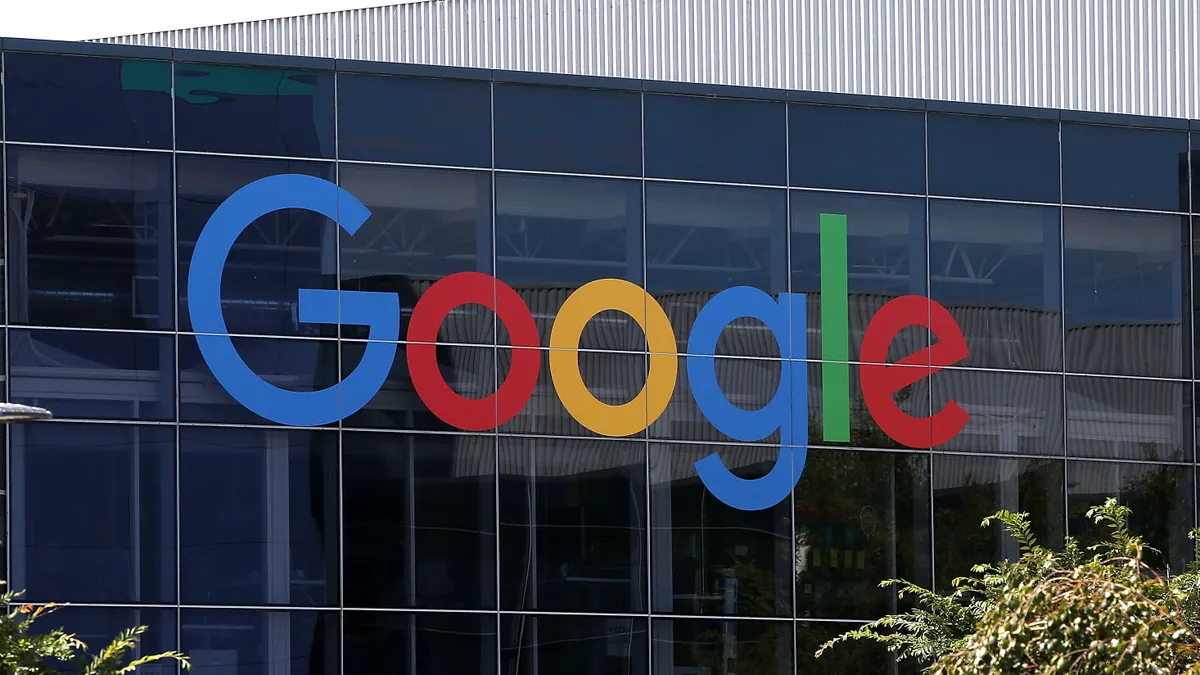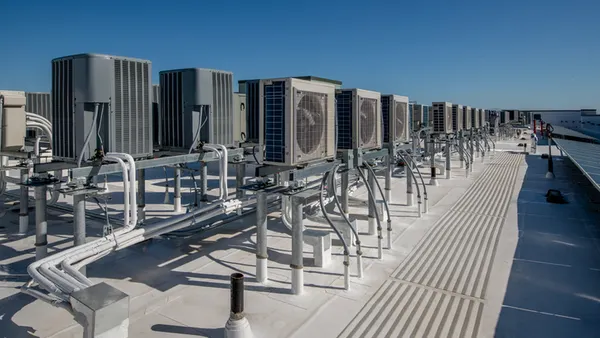Dive Brief:
- Google maintained a global average carbon-free energy rating of 64% across its data centers and offices from 2022 to 2023, despite a 13% year-over-year rise in its total greenhouse gas emissions, according to its 2024 Environmental Report released in July.
- The tech giant attributed the climb in its GHG emissions to a 37% year-over-year increase in its scope 2 emissions, which rose to 14.3 million tons of carbon dioxide equivalent last year, representing a 48% rise over levels seen in 2019, its target base year. The company said its total GHG emissions increased at a slower rate than the previous two years, with 2023 marking the first year it implemented a carbon removal strategy.
- The company completed 14 full or partial office building electrification strategies around the world, and signed its first office leases with electrification provisions, Google said. Last year, the organization also piloted a new demand response capability to shift non-urgent compute tasks to other times and locations, amid efforts to offset the increased electricity usage of its data centers.
Dive Insight:
Overall, scope 1 emissions, or the direct emissions from its operations, contributed 79,400 tons of carbon dioxide equivalent emissions, or approximately 1% of its overall emissions, per the report. Another 24%, or 3.42 million tons of CO2 equivalent came from scope 2, or market-based emissions, and the remaining 75%, or 10.8 million tons of CO2 equivalent, came from scope 3 emissions.
Given that the company has more direct control over its data centers and offices than other parts of the value chain, Google has reiterated its focus on decarbonizing its scope 2 emissions, which mainly come from buying electricity for its operations. Some of its key scope 2 emissions reduction levers include energy management and carbon-free energy procurement, the company says in the report.
At the end of 2023, Google achieved seven consecutive years of 100% renewable energy matching on a global and annual basis, with a 63% reduction in emissions from electricity use through power purchase agreements, the company says. However, data center electricity consumption outpaced its ability to bring more carbon-free electricity projects online, specifically in the U.S. and Asia-Pacific region, resulting in the 37% increase in scope 2 emissions, according to the report.
The company attributes this increase to carbon-free electricity contracts being terminated prior to projects becoming operational, and a mismatch between the organizations’ approach to CFE and the GHG Protocol’s scope 2 guidance, which establishes regional market boundaries for sourcing clean energy. Google says it faced significant regional challenges in sourcing clean energy in certain regions like the Asia Pacific, resulting in a discrepancy between its energy consumption and clean energy purchases that led to an increase in its scope 2 emissions.
To improve the efficiency of its data centers, Google is working to “build the world’s most energy-efficient compute infrastructure,” outfitting each data center with high-performance servers designed to use as little energy as possible, per the report.
While scope 1 emissions contributed a much smaller number to the company’s overall emissions, it has outlined strategies it is taking to cut these emissions. In addition to electrification, which Google calls an essential first step toward decarbonizing its office and shuttle fleet operations, it says it implemented an all-electric central utility plant in Sunnyvale, California, to efficiently deliver heating and cooling services to its nearby offices.
As a result of these initiatives, the company reduced its scope 1 emissions from 91,200 tons of CO2 equivalent in 2022 to 79,400 tons in 2023, compared with 81,900 tons in the baseline year, 2019.
The company says it is working to more accurately measure refrigerant leak rates and develop new technologies to reduce them, deploying natural, low global warming potential refrigerants at its data centers. In addition, Google says in 2023 it submitted a follow-on patent that would enable “intelligent diagnostics” to help operators better locate leaks, curbing refrigerant emissions and reducing energy consumption from faulty equipment.
At the end of 2023, over 300 Google offices have achieved LEED certification, including 71 with a platinum rating and 165 with a gold rating. This includes certifications granted in 2023 for 16 Google facilities, according to the report.











